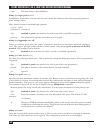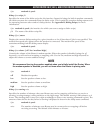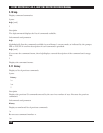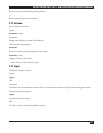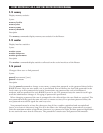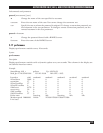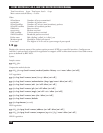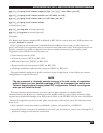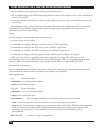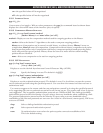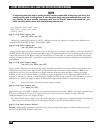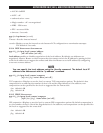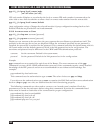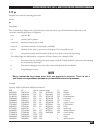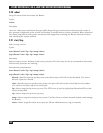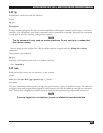
ASYNC ROUTER AR-P, AR-5, AND SYNC ROUTER REFERENCE MANUAL
176
• once connection tests pass, each end must pass authentication
• once authentication passes, PPP must send packets to select and configure one or more network-layer
protocols, IP and IPX
• once network-layer protocols are selected and configured properly, data can finally be sent over the
connection.
The following section, Syntax, lists the various ppp command syntax configurations. The next section
Subcommands and parameters, organizes the syntax and appropriate parameters according to the
command set in which they belong.
Syntax
Several categories of command syntax are listed next:
• current status of an interface
• commands to configure the layer control protocol (LCP) negotiation
• commands to configure the IP control protocol (IPCP) negotiation
• commands to configure the IPX control protocol (IPXCP) negotiation
• commands to change names and passwords that authenticate the Router to its peers
A PPP peer may refuse to negotiate a parameter altogether by using allow off. In general, we
recommend you do not set allow off with the remote subcommand. There is no requirement that both
ends of a PPP connection be Routers, only that the remote PPP peer support RFC1661 PPP.
Subcommands and parameters
Several subcommands use common parameters. Instead of repeating the global parameters for each
subcommand, the most common parameters and options are listed here.
Global parameters:
iface Physical interface:
• modem0-4—one of 5 possible modems
• sync0—the synchronous port
i&g_iface Physical interface:
• modem0-4—one of 5 possible modems
• sync0—the synchronous port
{local | remote} For each ppp command you must select between local and remote.
local—A peer has absolute control over what it receives by setting its local values.
remote—Set remote values to suggest to a remote peer what it will receive. Remote values suggested
from the other end are taken into consideration during negotiation, but may be refused by the
receiving peer. In general, we recommend you do not send an allow off with the remote
subcommand.
allow [on | off] Activates a feature’s negotiation.



